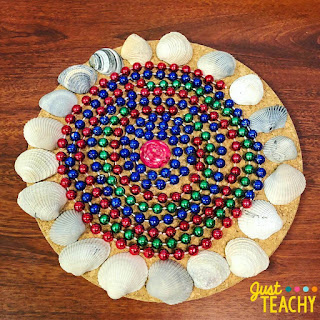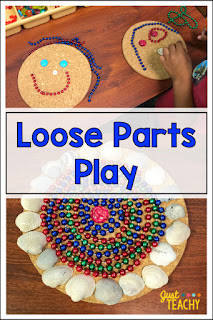Time for open-ended play is one of the greatest gifts we can give children, and there is no better way to increase their creativity. When children are given toys to play with that have an expected finished product, their creativity is limited. This is not to say that there is no place for these types of toys in a child's education, but with
Another great reason to use Loose Parts is that they are such an easy way to incorporate
"As long as materials can be moved, redesigned, put together, and taken apart in a variety of ways, they are classified as loose parts."
Simon Nicholson, founder of the idea of Loose Parts
Nicholson also states in his theory of loose parts that, "In any environment, both the degree of inventiveness and creativity, and the possibility of discovery, are directly proportional to the number and kind of variables in it."
In my classroom, the students have opportunities for Loose Parts Play at the light table and also in our sensory bins, but I'm also adding a few more options this year. I added these cork trivets from IKEA, and the students have loved creating faces and different patterns using the trivets as a base.
Right now in our Loose Parts center, we have:
*Cork Trivets (from IKEA, but I ordered mine on Amazon)(affiliate link)
*Shells (collected from the beach)
*Beaded Necklaces (cut into shorter pieces)
*Colorful Glass Stones (Dollar General or Amazon)(affiliate link)
*Buttons
*Rocks
If you are wanting to get started with Loose Parts, you might find this book helpful.
(affiliate link)
Do you use Loose Parts in your classroom?
I'd love to hear about it!





